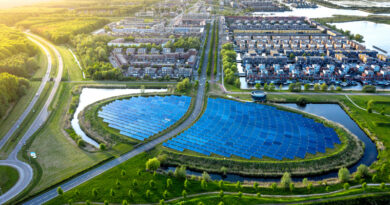
Why European buildings hold the key to an energy efficient Europe
With a consumption of more than 40 % of our total energy consumption in Europe, our buildings are also responsible for 36 % of our CO2 emissions.
Since 75 % of our buildings are energy inefficient, it is obvious that buildings hold the key to an energy efficient Europe.
It became increasingly relevant to harvest these “low hanging fruits” with the commitments that EU set itself in 2014 to reduce CO2 emissions including the goals of the Paris COP21 agreement of 2015.
As the first legislative file to be adopted in the Clean Energy for All Europeans package, the revised EPBD is a significant step in the right direction to meet our goals.
Previously, the framework mainly focused on ensuring highly efficient new buildings, but new buildings only come at a rate of roughly 1 % yearly in Europe, while 80 % of our current buildings will still be in use in 2050.
With the revised EPBD, we will walk the walk and deliver on an energy efficient Europe.
To support an increased renovation effort, financing tools are needed. However, investors are rarely keen to invest in a stop-and-go policy environment, and therefore I consider it a major success that the revised EPBD will commit Member States to long-term renovation strategies with a view all the way to 2050 and an ambition of a decarbonised building stock.
And while many say that particularly private households will not afford to improve their homes, nor have the needed incentives to do so. I hear these concerns and the EPBD will tackle this in the future;
Firstly, Member States must solve situations of split incentives that hamper renovations. By introducing concrete actions to tackle “market failures”, like tenants who lack the right to improve their rental home, but pay the energy bills for consumption.
Member States will also be obliged to provide guidance and information on renovation offers and financing tools.
And while public money and programmes are surely both helpful and necessary, they will not do it alone. Getting private money out working in the field of energy renovations is crucial.
And since the business case for energy savings is clear, there is a huge interest in private investor participation not least from institutional investors such as pension funds and mortgages banks, but also from private companies providing energy savings contracts and conducting renovations with real results.
With the revised EPBD, we have provided a framework that will deliver investor certainty, clear incentives to renovate and bring projects and investors together.
In addition, we establish ambitious new requirements for the deployment of technologies such as building automation for commercial buildings and individual room temperature controls for residential buildings.
To improve our buildings, we should deploy all available tools be it for example low-energy windows, smart meters, insulation, thermostats, heat pumps, software solutions.
The solutions vary from house to house and across the continent.
In the current low interest environment, investments in energy renovations of buildings offer a superior return – to the benefit of both citizens and businesses in Europe. Growth in the building sector means non-outsourcable jobs, particularly in SMEs. A win-win.
With this new EPBD, we will deliver a better European building stock and a significant contribution to energy efficiency and the sustainability, competitiveness, comfort and economy of Europe.
Hopefully, the rest of the Clean Energy for All Europeans package will follow with the same level of commitment soon enough.




